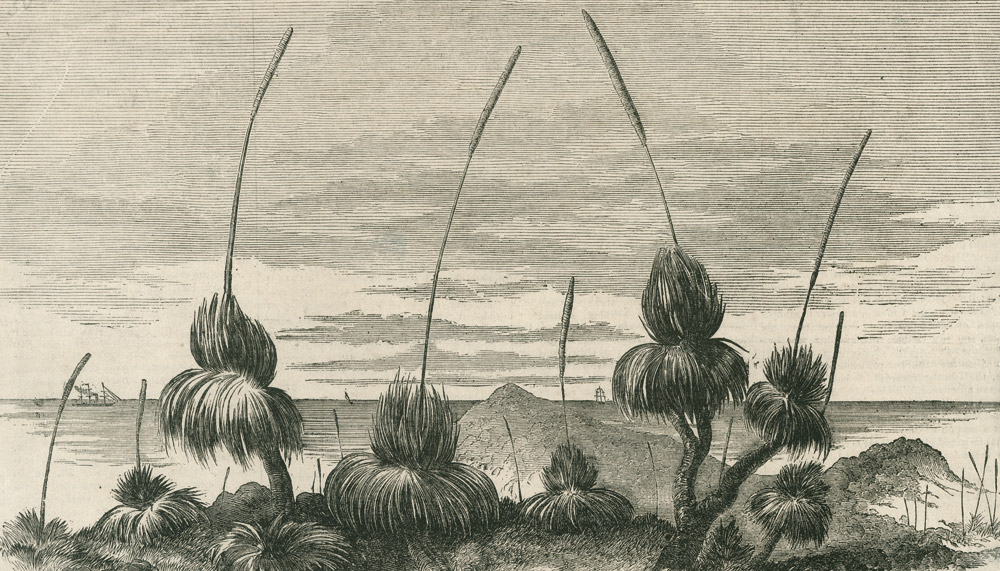A century of harvesting and exporting the resin of grass trees on Kangaroo Island, SA, is coming to an end.
Story Sarah Harris Photo State Library of South Australia
When Wes and Rita Hurrell bought an old sheep farm as part of their dairy diversification plan, they landed a special bonus thanks to four generations of careful stewardship.
The high rainfall country in the Mount Lofty Ranges on the southernmost tip of the Fleurieu Peninsula, SA, boasts several magnificent stands of Tate’s grass trees or yacca.
“We have mass groupings of them, including some with gum trees and really, really gnarly ones with two or three heads,” Rita explains as she bumps uphill in the champion Holstein breeder’s ute. “The boys think they are a bit of a pain, but I just love them, so do the birds, and the cows like to rub their heads against the trunks of the big ones.”
The most impressive of these is more than 3m tall. As they grow just 1cm a year, they are up to three centuries old. It is unusual to find so many towering mainland examples of this plant outside conservation areas, with many of the oldest grass trees destroyed by early land clearing and during the harvest of resin.
The Tate’s grass tree is one of 28 species of Xanthorrea found only in Australia. Sometimes described as a living fossil, it is somewhat confusingly neither grass nor tree, but a prehistoric relative of the lily, with a hollow trunk formed by old leaf bases cemented by resin.
Endemic to Kangaroo Island and the southern reaches of the Fleurieu, the yacca produces striking flower spikes and has long been prized by Indigenous Australians. The Ramindjeri people used the dried flower stems as fire drills as well as lightweight spear shafts, harvested roots and nectar for food, and also collected the ruby red resin, which they used for waterproofing and as the world’s first superglue. White settlers quickly recognised the value of the resin and it became the basis of a small, but highly profitable export trade.
This story excerpt is from Issue #135
Outback Magazine: Feb/Mar 2021










